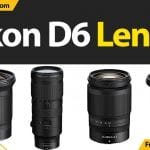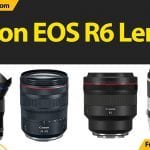In this review article, I will review 17 best lenses for wildlife photography for Canon and Nikon Cameras in 2020.
In addition, I will provide an actionable Buyers Guide on choosing the best lenses for wildlife and bird photography based on your budget and specific needs, irrespective of your camera brand.
Editors' Picks
Best Wildlife Lenses for Beginners
Nikon AF-S NIKKOR 200-500mm f/5.6E ED VR
Canon EF 100-400mm f/4.5-5.6L IS II USM
One of the most important factors that makes a photographer shine is the knowledge to choose the right lenses for different types of photography.
Definitely, you should know and consider many parameters before buying the right lenses for your specific purpose and condition.
The kit lens that comes with your camera is usually a multi-purpose lens with rather low quality.
So, you cannot normally take great photos using such built-in lenses.
Especially for the purpose of wildlife photography, you need to consider many features for the camera lens.
For example, if you wish to take photos of an animal, you and your lens need to be super quiet to ensure that the animal will not be frightened and won’t escape.
Also, for taking flying birds’ photos, your lens should be able to reduce shaking and be super-fast.
So, professional wildlife and bird photography demands specific lenses.
If you really wish to be a professional wildlife photographer or just wish to take beautiful wildlife photos for fun, I strongly recommend you to read this article to the end.
And who knows, you might even end up in a career in wildlife photography.
Also, it would be great to check our latest article on the best lenses for sports photography as the lens’s requirements have many similarities with wildlife photography.
BTW, chances are high if you also want to read our recent articles on the best lenses for Real Estate photography and Car photography.
Without further ado, let’s dive right in.
What Are the Best Lenses for Wildlife Photography (Canon & Nikon) in 2020?
Quick Answer:
- Canon EF 600mm f/4L IS III USM Super Telephoto Lens
- Canon EF 400mm f/2.8L IS USM II Super Telephoto Lens
- Canon EF 200-400mm f/4L IS USM Extender 1.4x Super Telephoto Zoom Lens
- Canon EF 400mm f/4 DO IS II USM Super Telephoto Lens
- Canon EF 100-400mm f/4.5-5.6L IS II USM Super Telephoto Zoom Lens
- Canon EF 70-200mm f/2.8L USM Telephoto Zoom Lens
- Canon EF 400mm f/5.6L USM Super Telephoto Lens
- Canon EF 300mm f/2.8L IS II USM Super Telephoto Lens
- Canon EF-M 55-200mm f/4.5-6.3 IS STM Telephoto Zoom Lens
- Nikon AF-S FX NIKKOR 300mm f/2.8G ED VR II Super Telephoto Zoom Lens
- Nikon AF-S FX NIKKOR 300mm f/4D IF-ED Super Telephoto Zoom Lens
- Nikon AF-S FX NIKKOR 500mm f/4E FL ED VR Super Telephoto Lens
- Nikon AF-S FX NIKKOR 400mm f/2.8E FL ED VR Telephoto Zoom Lens
- Nikon AF-S FX NIKKOR 600mm f/4G ED VR Super Telephoto Lens
- Nikon AF-S FX NIKKOR 200-500mm f/5.6E ED VR Super Telephoto Zoom Lens
- Nikon AF-S NIKKOR 180-400mm f/4E TC1.4 FL ED VR Super Telephoto Zoom Lens
- Nikon AF-S FX NIKKOR 500mm f/4E FL ED VR Super Telephoto Lens
Comparison Table for the Best Lenses for Wildlife Photography
| Camera Lens | View on Amazon | Weight (lbs) | Maximum Aperture | Maximum Focal Length (mm) | Minimum Focal Length (mm) | Vibration Reduction | Minimum Focusing Distance | ||
|---|---|---|---|---|---|---|---|---|---|
| Canon EF 600mm f/4L IS III USM |
 |
6.73 | f/4.0 | 600 | 600 | 5 shutter speed stops | 13.8 ft./4.2m | ||
| Canon EF 400mm f/2.8L IS II USM |
 |
8.49 | f/2.8 | 400 | 400 | 4 shutter speed stops | 8.86 ft./2.7m | ||
| Canon EF 200-400mm f/4L IS USM Extender 1.4x |
 |
7.98 | 1x: f/4.0 1.4x: f/5.6 | 1x: 400mm 1.4x: 560mm | 1x: 200mm 1.4x: 280mm | 4 shutter speed stops | 6.6 ft./2m | ||
| Canon EF 400mm f/4 DO IS II USM |
 |
2.65 | f/4.0 | 400 | 400 | 4 shutter speed stops | 10.83 ft./3.3m | ||
| Canon EF 100-400mm f/4.5-5.6L IS II USM |
 |
3.46 | f/4.5 | 400 | 100 | 4 shutter speed stops | 3.2 ft./0.98m | ||
| Canon EF 70-200mm f/2.8L USM |
 |
2.89 | f/2.8 | 200 | 70 | None | 4.9 ft./1.5m | ||
| Canon EF 400mm f/5.6L USM |
 |
2.76 | f/5.6 | 400 | 400 | None | 115 ft./35m | ||
| Canon EF 300mm f/2.8L IS II USM |
 |
5.29 | f/2.8 | 300 | 300 | 4 shutter speed stops | 6.6 ft./2.0m | ||
| Canon EF-M 55-200mm f/4.5-6.3 IS STM |
 |
0.57 | f/4.5 | 200 | 55 | 3.5 shutter speed stops | 3.28 ft./1.0m | ||
| Nikon AF-S FX NIKKOR 300mm f/2.8G ED VR II |
 |
6.39 | f/2.8 | 300 | 300 | 4 shutter speed stops | 7.2 ft./2.2m | ||
| Nikon AF-S FX NIKKOR 300mm f/4D IF-ED |
 |
3.17 | f/4.0 | 300 | 300 | None | 4.8 ft./1.5m | ||
| Nikon AF-S FX NIKKOR 500mm f/4E FL ED VR |
 |
6.61 | f/4.0 | 500 | 500 | 4 shutter speed stops | 11.9 ft./3.6m | ||
| Nikon AF-S FX NIKKOR 400mm f/2.8E FL ED VR |
 |
8.38 | f/2.8 | 400 | 400 | 4 shutter speed stops | 8.5 ft./2.6m | ||
| Nikon AF-S FX NIKKOR 600mm f/4G ED VR |
 |
11.16 | f/4.0 | 600 | 600 | 2.5 shutter speed stops | 15.7 ft./4.8m | ||
| Nikon AF-S FX NIKKOR 200-500mm f/5.6E ED VR |
 |
5.1 | f/5.6 | 500 | 200 | 4.5 shutter speed stops | 7.7 ft./2.2m | ||
| Nikon AF-S NIKKOR 180-400mm f/4E TC1.4 FL ED VR |
 |
7.11 | f/4.0 - (with TC: f/5.6) | 400 - (with TC: 560) | 180 - (with TC: 252) | 4 shutter speed stops | 6.6 ft./2.0m | ||
| Nikon AF-S FX NIKKOR 500mm f/4E FL ED VR |
 |
6.61 | f/4.0 | 500 | 500 | 4 shutter speed stops | 11.9 ft./3.6m | ||
Best Canon Lenses For Wildlife Photography (2020)
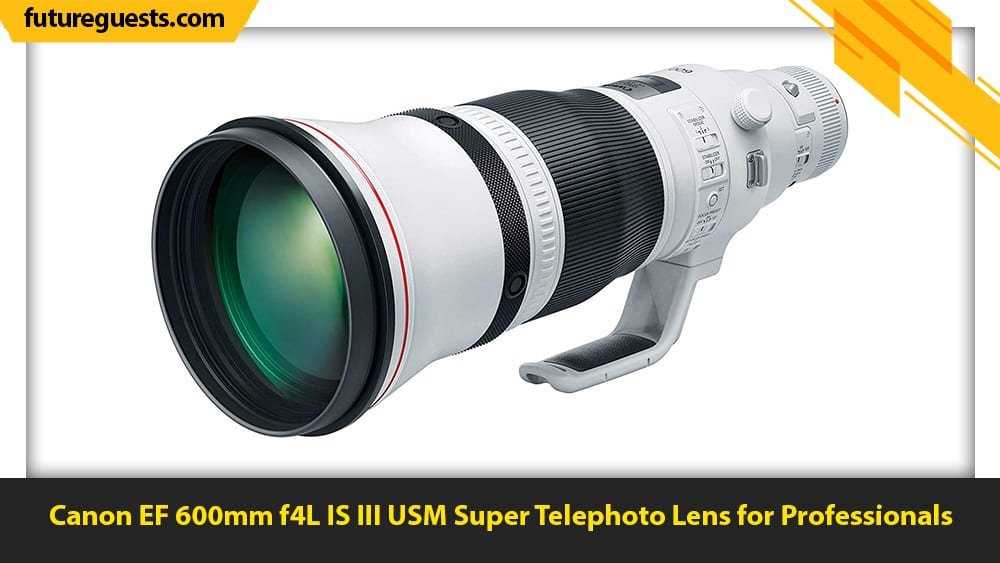
The Canon EF 600mm f/4L IS III USM is one of the best Canon lenses for wildlife photography due to its high image quality, super spectra coating and air sphere coating (ASC).
Super Spectra coating helps reduce unwanted light to maintain image quality, and ASC reduces unwanted flare and reflections.
Current EF 600mm f/4L IS III USM Lens is approximately 20% lighter than its predecessor due to lighter image stabilization (IS) unit.
The 9-blade aperture of this L-series lens allows capturing high quality images of the animals with beautifully blurred backgrounds.
A two-layer heat protection structure together with its dust and water-resistant construction enables extended shootings in the sun and bad weather conditions without reducing image quality.
The fluorine coating on the lens prevents sticking of oil and other surface residues, and makes cleaning of the lens easier using only a dry cloth.
What is even more interesting about this lens is that you can adjust the speed of manual focus using an additional 3-position switch.
The optical image stabilizer system of this lens can reduce shake up to 5 shutter speed stops.
Finally, you can get closer to your target as much as you want with a minimum focusing distance of 13.8 ft/4.2m.
This feature together with the image stabilization system make this lens ideal for shooting bird photos.
The only disadvantage of this lens is its high price.
Perhaps this lens is more suitable for professional photographers who make a living using their cameras.
This lens is designed for full frame Canon EF-mount DSLRs, but it can also be used on APS-C models with an equivalent 960 mm focal length.
The camera weighs 24.9 lbs with its dimension being 168 × 448 mm.
Pros
- High image quality with minimized flare
- Excellent manual and auto-focusing system
- Strong heat protection structure
- Excellent image stabilization system
Cons
- Expensive
- Heavy
- Not easily portable due to its dimension
Expert Opinion:

The Canon EF 400mm f/2.8L IS USM II is one of the best lenses for wildlife photography due to its fluorite optics that produce sharp images with minimal chromatic aberration.
The designed image stabilization system is still excellent compared to the Canon EF 600mm f/4L IS III USM lens, offering up to four extra stops of performance.
It has the longest focal length among the lenses with f/2.8 aperture.
Therefore, while zooming on the subject, the background could be kept blurred.
The Fluorine coating keeps sticking of surface residues to a minimum and its water-resistant property enables outdoor shooting in bad weather conditions.
Moreover, this lens has a security slot for wire-type locks.
The price is almost half the price of Canon EF 600mm f/4L IS III USM Lens but it is still expensive I believe.
This lens weighs about 8.49 lbs which means that it is hard to take photos while handholding this lens.
It is designed for full frame Canon EF-mount DSLRs and it can also be used on APS-C cameras with an equivalent focal length of 640 mm.
This lens is also compatible with EF 2X teleconverters and its dimension is 163 × 461 mm.
These features make this lens one of the best for bird photography as well.
Pros
- Extremely fast auto-focus
- Minimal distortion
- Creating beautifully blurred backgrounds
Cons
- Can’t be handheld for a long time due to its weight
- Not easily portable due to its dimension
Expert Opinion:
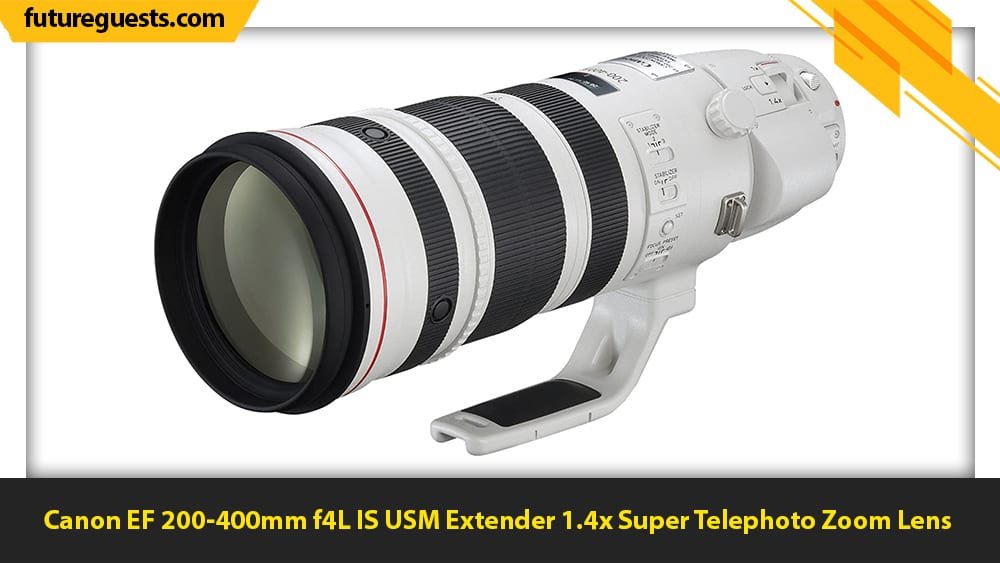
The Canon EF 200-400mm f/4L IS USM lens is popular for its image quality, image stabilization and high performance.
The built-in 1.4x extender maximizes the versatility to fulfil diverse needs of wildlife photographers.
Using this feature the zoom range could be extended to 280–560mm (f/5.6) with flick of a switch.
This is also useful when the lenses cannot be switched quickly.
Excellent correction of chromatic aberration is achieved in these lenses using one fluorite and four ultralow dispersion (UD) lens elements.
Fast and accurate auto-focusing is made practical by utilizing inner focusing, ring-type ultrasonic motor (USM), a high-speed CPU and optimized autofocus (AF) algorithms.
Also, the lens is water resistant and has surface fluorine coating.
This lens weighs 7.98 lbs and is designed for full frame Canon EF-mount DSLRs.
It can also be used with APS-C cameras with an equivalent 320-640 mm focal length.
Using the built-in 1.4x extender, the focal length can be extended to 448-896 mm with APS-C cameras.
Lens dimension is 128 × 366 mm and it was first introduced in 2013.
Pros
- Versatility in zoom range
- Minimal chromatic aberration
- Fast and accurate focusing
Cons
- A bit heavy
- May face loss of contrast issues in bright light
Expert Opinion:
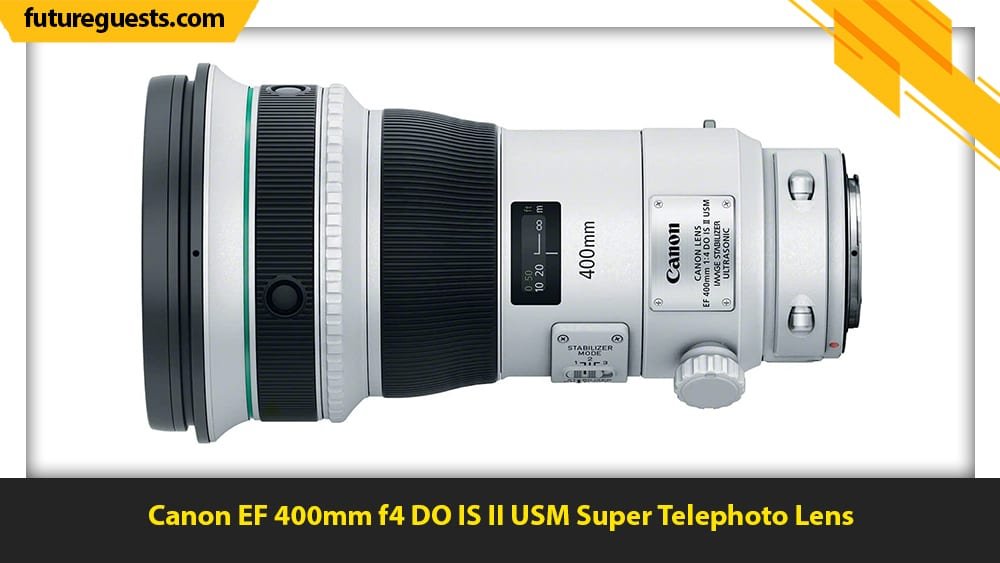
Another ideal best lens for wildlife photography would be the Canon EF 400mm f/4 DO IS II USM.
Weighing only 2.65 lbs, it is also one of the lightest lenses used for wildlife photography.
This L-series lens takes the advantage of gapless dual-layer diffractive optical elements to reduce flare and enhance image quality.
It has up to four shutter speed stops of correction and a minimum focusing distance of 10.8 ft.
It features both manual and autofocus options with autofocus stop buttons located on the front of the lens for fast and quiet focusing.
The lens is dust and water-resistant with a new coating to decrease fingerprints on the lens front.
This lens became available in the market first in 2014. Its measured size is 128 × 240.1 mm and it is suitable for both full frame EF-mount DSLR cameras and APS-C cameras.
When mounted on APS-C cameras, it provides a 640 mm equivalent focal length.
Pros
- Light weight
- Reduced flare
- Fast and quiet focusing
Cons
- Extenders need to be used for taking photos of remote objects
Expert Opinion:

If you are looking for a high-quality Canon lens with reasonable price for wildlife photography, then you should go for Canon EF 100-400mm f/4.5-5.6L IS II USM lens.
Chromatic aberration is reduced by using one fluorite element and a super ultralow dispersion element.
The lens has an air sphere coating which helps to minimize backlit flaring and ghosting.
It consists of a four-stop three-mode optical image stabilizer and a focusing system enabling accurate focusing down to 3.2 ft and 31x maximum magnification.
Moreover, the adjustable torque ring enables determination of zoom tension. It has a rotation-type zoom ring enabling precise composition and great balance for hand-holding.
Other specifications include dust and water sealing, an easily detachable tripod mount and a new hood with a side window. It is designed for easy adjustment of specialty filters without removing the hood.
This zoom lens works on both full frame EF-mount DSLRs and APS-C type cameras.
When used with APS-C cameras, the equivalent focal length is 160-640 mm. The lens dimension is 94 × 193 mm and weighs 3.46 lbs.
The lens came into market first in 2014 and works well with both EF 1.4X and EF 2X teleconverters.
Pros
- Reasonable price
- Adjustable torque ring
- Minimized flare and ghosting
- Multiple usability enhancements
- Light weight
Cons
- Loss of contrast against bright light
Expert Opinion:
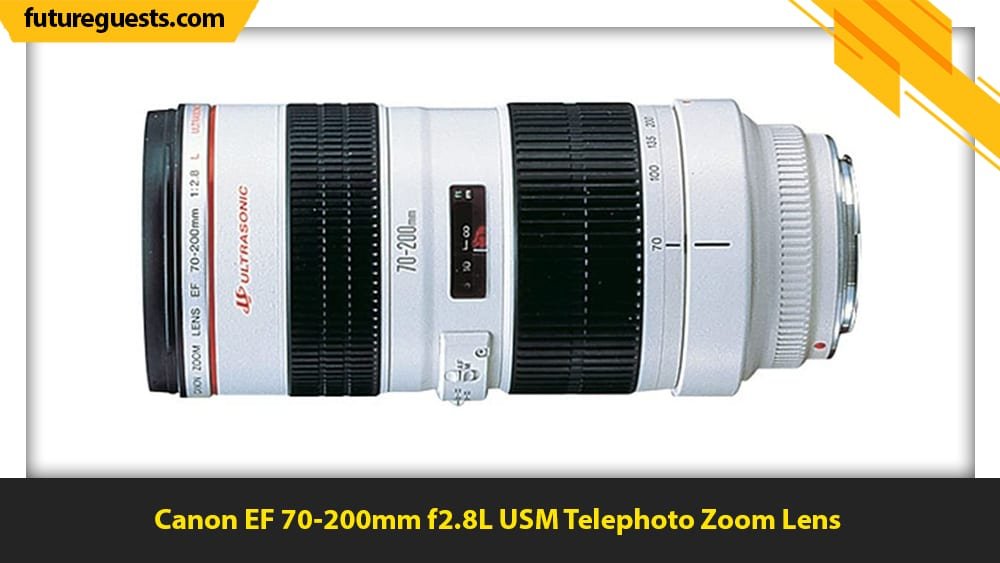
This L-series telephoto zoom lens delivers high quality photos by incorporating four ultralow dispersion glass elements to correct chromatic aberrations.
The Canon EF 70-200mm f/2.8L USM Telephoto Zoom Lens is one of the most popular SLR lenses for wildlife and sport photography in the world.
By having a maximum aperture of f/2.8, it delivers superb image quality in bad lighting conditions and allows control over depth of field.
Flare and ghosting are reduced through applying a super spectra coating.
Fast, quiet, and accurate autofocusing is made practical by using ring-type ultrasonic motor and internal focusing system.
Although this lens delivers superhigh image quality, it doesn’t have any image stabilization and vibration reduction system.
However, a removable rotating tripod collar helps maintain a stable operating condition of the lens on a tripod.
Due to not having the stabilization system, this lens is very affordable and great for people who shoot only for fun.
This lens is compatible with both full frame Canon EF-mount DSLRs and APS-C cameras, however with the APS-C models the equivalent focal length range is within 112-320 mm.
It works well with both EF 1.4X and EF 2X teleconverters.
It weighs only 2.89 lbs with its diameter and length being 85 mm and 194 mm, respectively.
The lens was introduced first in 1995, but it is still very popular.
Pros
- Minimized chromatic aberration
- Excellent image quality
- Reasonable price
- Really light weight
Cons
- No image stabilization system
Expert Opinion:

If you are looking for an affordable lens with high portability and handling ease, you should go for Canon EF 400mm f/5.6L USM Super Telephoto lens.
With a weight of only 2.76 lbs, it is one of the lightest telephoto lenses for wildlife photography.
The 90 mm diameter and 257 mm length make it indeed easy to backpack.
It incorporates one super ultralow dispersion glass element with characteristics similar to fluorite and one ultralow dispersion glass element to deliver sharp images from corner to corner.
It consists of a built-in hood and a detachable tripod mount.
Super spectra coating is applied to achieve better contrast and color fidelity in bad lighting conditions.
A ring-type ultrasonic motor helps to achieve fast and quiet autofocus performance.
However, it has no image stabilization and vibration reduction system.
Therefore, to get best results, I would suggest to use a tripod.
The lens is compatible with full frame Canon EF-mount DSLRs and APS-C camera models.
When used with APS-C models, the equivalent focal length is 640 mm.
It works well with both EF 1.4X and EF 2X teleconverters and was first introduced in 1993.
It is very affordable and if you don’t make a living by photography, it is one of the best choices for wildlife photography.
Pros
- Minimized chromatic aberration
- Reasonable price
- Really light weight and portable
Cons
- No image stabilization system
- Not suitable for fast-moving objects
Expert Opinion:

The Canon EF 300mm f/2.8L IS II USM Super Telephoto Lens is designed for full frame Canon EF-mount DSLRs but it also works well with APS-C models while providing an equivalent 480 mm focal length.
It is one of the best lenses for wildlife photography.
It can be used with both EF 1.4X and EF 2X teleconverters, which makes it ideal for bird photography.
This L-series prime lens takes advantage of an advanced optical design by incorporating two fluorite elements to minimize color fringing and chromatic aberrations.
Sub-wavelength coating is used on each element to reduce flare and ghosting effects.
Its f/2.8 maximum aperture allows the control over depth of field.
The four-stop image stabilization system with three stabilization modes enables reducing the shake while shooting fast moving objects or while shooting from a car.
Fast and quiet autofocusing is made practical through application of a ring-type ultrasonic motor, a high-speed CPU and optimized focusing algorithms.
The lens is dust and water-resistant for protection against bad weather conditions. Having a dimension of 128 × 248 mm, it weighs 5.29 lbs.
Pros
- Minimized chromatic aberration
- Super high image quality
- Really fast and quiet autofocus performance
- Four-stop image stabilization system
Cons
- Hard to find any cons
Expert Opinion:

If you have a mirrorless camera, then the superlight Canon EF-M 55-200mm f/4.5-6.3 IS STM super-telephoto zoom lens is one of the best lenses for wildlife photography.
This telephoto zoom lens has 5-group optical system which helps to create superb image quality.
It incorporates one aspherical element and one ultralow dispersion to minimize distortions and chromatic aberrations.
Its impressive image stabilization system is able to reduce the camera shake up to 3.5 shutter speed stops. This enables taking photos of fast-moving objects like birds.
Stepper motor (STM) technology which is used inside this lens enables fast, smooth and quiet autofocusing.
It is also possible to make preferred focus adjustments by using the manual focus option.
This lens is compatible with APS-C format EOS M-series mirrorless cameras. The lens weighs only 0.57 lbs with dimension of 60.9 × 86.5 mm. It was first introduced in 2014.
Pros
- Minimized chromatic aberration
- Superlight
- Really fast and quiet autofocus performance
- Great stabilization system
- Reasonable price
Cons
- Focusing problems in low light
- Sharpness issues in closer distances
Expert Opinion:
Best Nikon Lenses for Wildlife Photography (2020)
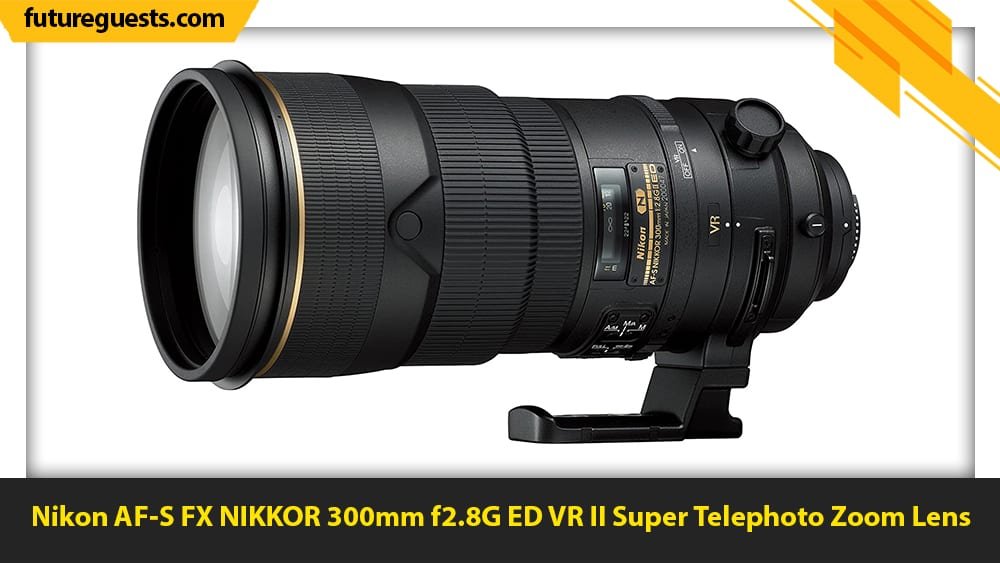
The super telephoto AF-S NIKKOR 300mm f/2.8G ED VR II zoom lens from Nikon is perfect for wildlife photography because of its high-quality sharp images, excellent vibration reduction technology and fast and quiet autofocusing.
The image stabilization system of this lens enables handheld shooting by reducing shake up to four shutter speed stops.
This makes it one of the best lenses for bird photography available in the market.
It also features both manual and autofocus options with fast and secure switching between them.
Moreover, autofocus memory recall enables quick return to predetermined focusing point.
The minimum focusing distances for manual and autofocusing modes are 7.2 ft and 7.5 ft, respectively.
The lens works on both FX-format F-mount cameras and DX model cameras. When used with DX model cameras, the equivalent focal length is extended to 450 mm.
This lens works well with all Nikon teleconverters like TC-14, TC-17, and TC-20.
The lens weighs 6.4 lbs with dimension of 124 × 268 mm. It became available in the market in 2010.
Pros
- Autofocus memory recall
- Super sharp images
- Excellent vibration reduction technology
Cons
- A bit heavy for handholding
- Slower focus when used with a teleconverter
Expert Opinion:

The Nikon AF-S NIKKOR 300mm f/4D IF-ED lens is an excellent super telephoto lens for wildlife photography. It produces super sharp images.
The silent wave motor technology used in this lens allows fast and quiet transitions from autofocus to manual focus.
It doesn’t have any power drain during manual focusing.
Despite being a super telephoto lens, it is really light.
In general, it provides a great balance between size, image quality and speed.
Moreover, it has a built-in lens hood which can lock into a position.
The lens has no rear element; therefore, you should be careful while shooting in dusty environments.
Perhaps keeping the teleconverter mounted will help to avoid any problems.
Two extra-low dispersion (ED) elements have been used to reduce chromatic aberrations.
This lens could be used with both FX-format F-mount cameras and DX models. With DX model cameras, the equivalent focal length is 450 mm.
It is compatible with three Nikon teleconverters which are TC-14, TC-17, and TC-20.
Its diameter and length are 90 mm and 222.5 mm, respectively and weighs only 3.17 lbs. It was first introduced in 2000.
Pros
- Providing a balance between size, image quality and speed
- Light weight
- Super quiet
Cons
- Lack of rear element
Expert Opinion:

The Nikon AF-S NIKKOR 500mm f/4E FL ED VR lens consists of three extra-low dispersion glass elements, which significantly help to eliminate flare and chromatic aberration.
Using the vibration reduction (VR) feature, you can capture photos with four shutter speeds slower than would otherwise be possible.
The electromagnetic diaphragm of the lens which is denoted by the E designation, allows a constant exposure when trying to capture photos at high speeds.
This lens also has the memory recall option, which enables to focus to a predetermined position of focus.
The lens is designed for FX-format Nikon F-mount cameras; however, it can also be used with DX camera models.
It provides an equivalent of 750 mm focal length when mounted on DX cameras.
To keep dirt and dust away, the front element of the lens is coated with fluorite.
Weighing 6.6 lbs with dimension of 140 × 387 mm make it easily handholdable for only a short period of time.
This lens was first introduced in 2015 and is compatible with AF-I/AF-S teleconverters as well as TC-14, TC-17, and TC-20 teleconverters.
Greater exposure control stability is made possible through a specialized electromagnetic aperture mechanism that is very helpful when shooting at fast and continuous rates.
However, this feature makes the lens only compatible with the certain camera models.
Pros
- Minimal chromatic aberration
- Improved VR
- Fast autofocus
Cons
- Single focus
- Expensive
Expert Opinion:
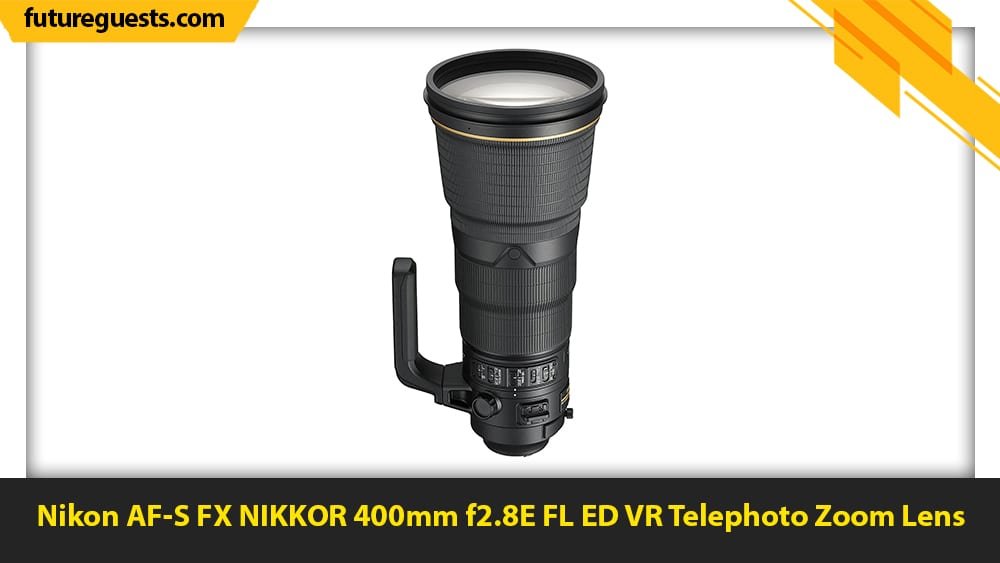
The Nikon AF-S FX NIKKOR 400mm f/2.8E FL ED VR telephoto zoom lens is excellent and one of the best lenses for wildlife photography.
Mainly because of its super sharp images and extremely fast performance.
The vibration reduction feature reduces the effects of camera shake up to four shutter speed stops.
This make it ideal for bird photography as well.
This lens can’t be easily handheld due to its weight though it performs well when mounted on a tripod.
Image quality is enhanced by using two fluorite and two extra-Low dispersion elements together with an aperture of f/2.8, which causes to transmit only the needed amount of light.
Also, this makes the lens ideal to shoot in low light conditions.
Surface and internal reflections are reduced by incorporation of a nano crystal coating and a super integrated coating.
Fast, quiet and precise autofocus is made practical by using silent wave motor technology.
If you are looking for ultra-sharp images with maximum aperture, then you should go for this lens.
The lens was first introduced in May 2014 and became available in the market in August 2014.
It weighs 8.38 lbs with its diameter and length being 159.5 mm and 358 mm, respectively.
The lens can be used with both FX-format Nikon F-mount cameras and DX models. When used with DX cameras, the focal length is equivalent to 600 mm.
It is compatible with all Nikon teleconverters.
Similar to Nikon AF-S NIKKOR 500mm f/4E FL ED VR lens, the use of the specialized electromagnetic aperture mechanism makes this lens compatible with only some Nikon camera models.
Pros
- Extremely sharp images
- Vibration reduction
- Super-fast
Cons
- Expensive
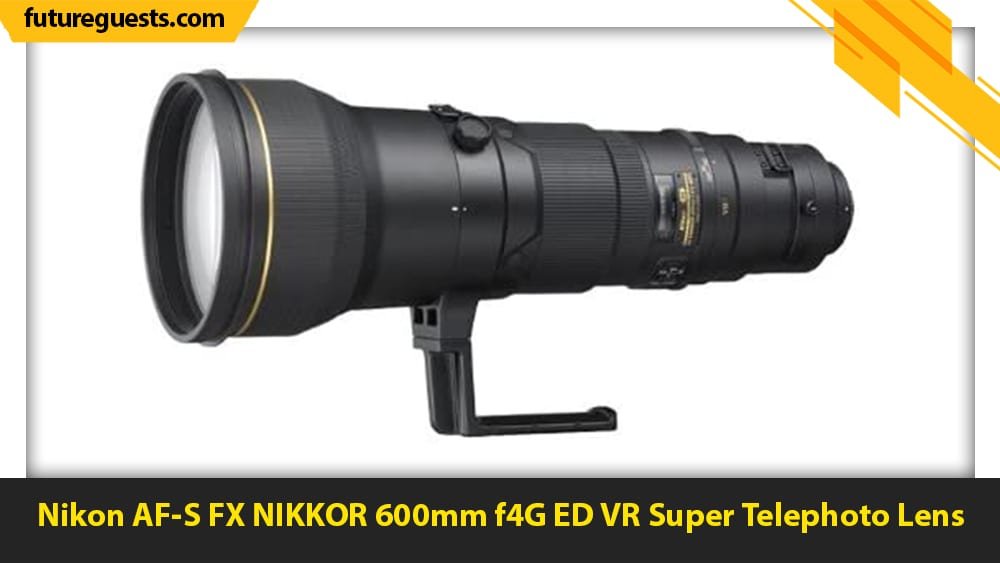
The Nikon AF-S FX NIKKOR 600mm f/4G ED VR super telephoto prime lens is excellent for professional wildlife photography due to its enhanced vibration reduction (VR II) technology, fast and precise autofocus performance and strongly built body.
It is fit for Nikon F-mount cameras and works perfectly with both FX- and DX-format DSLRs. On DX models, the equivalent focal length is 900 mm.
The lens includes a magnesium die-cast barrel and dust and moisture sealing for shooting in bad weather conditions.
This lens is extremely long reaching and can draw in distant objects, which is really useful in wildlife and bird photography.
Moreover, the lens has a new tripod detection mode for decreasing the vibration caused by the shutter release when mounted on a tripod.
The vibration reduction technology of this lens is able to reduce shake up to 2.5 shutter speed stops.
Fast and precise autofocus is made practical by the use of a silent wave motor and internal focusing system with manual override option.
Moreover, it consists of a focus limiter switch, focus lock and autofocus memory recall option for better focus performance.
Chromatic aberration is minimized by incorporation of three extra-low dispersion glass elements.
Flare and ghosting effects are eliminated by the use of nano crystal and super integrated lens coatings.
However, you should be aware that this lens is 11.16 lbs, which makes it too heavy for handholding.
This lens was introduced in 2007. The diameter and length of the lens are 166 mm and 445 mm, respectively, which is relatively larger compared to other telephoto lenses.
It works with Nikon teleconverters: TC-14, TC-17, and TC-20.
Pros
- Ultra-sharp images
- Enhanced vibration reduction
- Super-fast
- Extremely long reaching
Cons
- Can’t be handheld due to heaviness
- Large size and therefore not easily portable
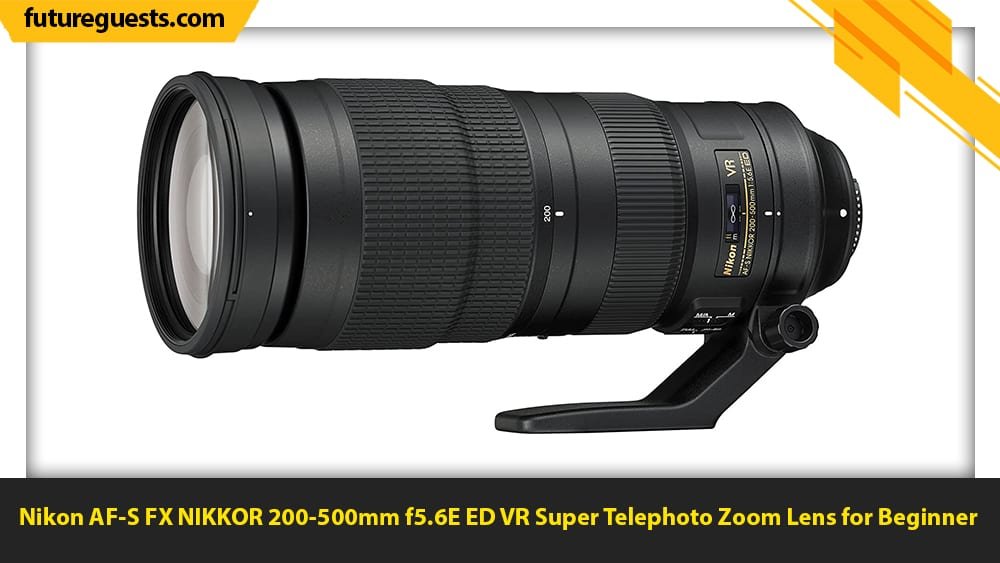
One of the most affordable best lenses for wildlife photography would surely be the Nikon AF-S NIKKOR 200-500mm f/5.6E ED VR lens.
This compact zoom telephoto lens is able to bring distant birds and other animals into tight focus.
The lens is sealed against dust and water for maximum protection in bad environmental conditions.
By incorporating a super integrated coating on lens elements, it reduces flare and ghosting for optimized image clarity.
Application of a silent wave motor autofocus system enables fast and near-silent autofocusing.
The image stabilization system reduces camera shake by 4.5 shutter speed stops and helps maintain sharp and steady shots.
This lens is designed for FX image sensors. It also works well with DX sensor formats providing an equivalent focal length of 300-750 mm.
It is compatible with three Nikon AF-S teleconverters which are TC-14, TC-17, and TC-20.
The dimensions are 108 mm for diameter and 267.5 mm for the length. The lens weighs 5.1 lbs and was first available in the market in 2015.
Just be aware that this lens is mostly suitable for people who shoot on occasion and just for fun.
Pros
- Excellent vibration reduction performance
- Sharp images
- Very long reaching
Cons
- Problems in zooming system
- Getting soft in maximum zoom
Expert Opinion:

The Nikon AF-S NIKKOR 180-400mm f/4E TC1.4 FL ED VR lens is an excellent choice for wildlife photography for many reasons.
First of all, this medium to super telephoto zoom lens delivers high-quality images with minimal chromatic aberration by employing eight extra-Low dispersion glass elements and one fluorite element.
Moreover, flare and ghosting are reduced by applying nano crystal and super integrated coatings to these elements.
Second, its sophisticated vibration reduction system is able to reduce camera shake by four shutter speed stops.
Third, the built-in 1.4x teleconverter allows switching to an effective 252-560 mm focal length for longer reach.
The f/4 maximum aperture enables producing shallow depth of field.
Moreover, fast and quiet autofocusing is made practical by incorporating a silent wave motor in lens design.
This weather-resistant lens is designed for FX image sensors but it also works fine with DX camera models. When used on DX format cameras, the focal length is equivalent to 270-600 mm.
The updated version of this lens became available in the market in 2018.
The diameter and length are 128 mm and 362.5 mm, respectively and it weighs 7.11 lbs, which is comparatively light considering its advanced technology and design.
This lens is very expensive and I only recommend it to professionals who make a living with their cameras.
Pros
- Ultra-sharp images
- Excellent vibration reduction
- Super-fast and quiet autofocusing
- Extremely long reaching
Cons
- Can’t be handheld due to heaviness
- Expensive
Expert Opinion:
The Nikon AF-S NIKKOR 500mm f/4E FL ED VR lens is an impressive super telephoto lens that incorporates two fluorite and three extra-Low dispersion elements.
So, it delivers high-quality images with minimal chromatic aberrations and distortions.
Nano crystal and super integrated coatings have been added to lens elements for reduced flare and ghosting.
Focusing performance is fast and quiet due to use of silent wave motor autofocus system.
Its image stabilization system is able to reduce camera shake effects by four shutter speed stops.
Greater exposure control stability is created by an electromagnetic aperture mechanism.
However, this feature restricts lens compatibility to some cameras.
The lens is weather-resistant to enable maximum protection in bad weather conditions.
It is also compatible with three Nikon AF-S teleconverters: TC-14, TC-17, and TC-20.
This lens is specifically designed for FX-format Nikon F-mount cameras, but it works fine with DX models as well, while providing an equivalent focal length of 750 mm.
The dimension of the lens is 140 × 387 mm and it weighs 6.61 lbs. It first became available in 2015.
Pros
- Minimal chromatic aberration
- Great image stabilization system
- Super-fast and quiet autofocusing
Cons
- Expensive
- Relatively large size
Best Lenses for Wildlife Photography — Buyers Guide
Telephoto lenses are usually the best for wildlife photography because they allow to take great pictures while being far enough from the target.
This feature is especially essential for wildlife photography as you don’t want to get hurt by the animals or cause them to escape.
Some of the expressions used for describing various features of the lenses might be unfamiliar or complicated for you.
Therefore, I have prepared a comprehensive Buyers Guide on what each feature means, and their importance and sweet spot for wildlife photography.
Now let’s look at some of the parameters you need to consider before choosing your lens.
What is the best focal length for wildlife & bird photography?
A very important characteristic of a lens is the focal length in millimeter.
Larger focal length values mean that you can capture sharp photos of very far targets.
For wildlife photography, a focal length of about 300mm to 800mm would be nice!
However, you could also use extenders to boost the reach of your lens.
What maximum aperture do you need for wildlife & bird photography?
Aperture refers to the opening in a lens through which light can pass and enter the camera.
The size of the aperture could be changed according to your needs to allow more or less light entrance.
The change in aperture could make your photo`s background sharp or blur. It can also change the brightness level of your photos.
This feature is stated in f/stops and written in numbers.
Larger aperture is achieved through lower f/stops while smaller aperture is obtained by higher f/stops.
Therefore, a lower f/stop results in brighter photos.
The smaller the aperture, the more blurred background you could get.
Also, you need large aperture ranges in order to get perfect photos in low-light conditions, which is really important for wildlife photography.
Zoom or Prime Lens? Which one is better for wildlife photography?
A prime lens has a fixed focal length while a zoom lens has variable focal length and can zoom in or zoom out an object.
Obviously, zoom lenses offer more flexibility; however, they usually have a variable maximum aperture as you zoom in.
For example, with Sigma 150-600mm f/5-6.3 lens you can achieve f/5 maximum aperture at 150 mm while at 600 mm the maximum aperture is restricted to f/6.3 and smaller.
However, this is not true for all of the zoom lenses and some of them like Nikon 200-500mm f/5.6 lens have fixed maximum aperture throughout their zoom range.
Another key point that you should pay attention to is that prime lenses are usually sharper than zoom lenses and have wider maximum aperture.
In fact, if you want to get a zoom lens that has the same picture quality of a prime lens, it will be more expensive.
If you don’t plan to use extenders, I personally think that zoom lenses are more effective for wildlife photography because you usually are not able to get that close to the animals.
However, choosing between the two totally depends on your needs and budget.
Use of Teleconverters for wildlife photography
For wildlife photography, you can use teleconverters to increase the focal length of your lens.
However, there are a few points you should consider.
Teleconverters can reduce the light that reaches the lens sensor.
To address this issue, you need to adjust shutter speed and increase ISO.
Use of teleconverters could also affect autofocus performance to slow down.
Moreover, teleconverters – if not chosen carefully – could degrade the quality of the image and decrease the sharpness of photos.
Therefore, you should try to select a lens with appropriate focal length and try not to totally depend on teleconverters.
Full Frame or APS-C Lens?
A full frame lens has a 35mm frame of film while an APS-C lens has a bit smaller frame.
The APS-C lenses give you a narrower field of view compared to the full frame lenses since they are projecting to cover a smaller sensor.
Mounting a full frame lens on a camera with an APS-C sensor would result in getting a crop factor, which means that the camera sensor will magnify the scene to produce an image with full frame size.
For example, if you mount a 50 mm full frame lens on an APS-C camera with 1.5x crop factor, you will capture a field of view that is equivalent to 75 mm on a full frame camera.
Canon and Nikon have a crop factor of 1.6x and 1.5x, respectively.
So, if you use a full frame lens with a camera, in which the sensor can capture less field of view, you will get an image probably from the middle of the imaging circle of lens.
This will be an issue in wildlife photography because generally you want to capture a bigger scene.
The main advantage of using APS-C lenses on full frame cameras is that you can achieve wider coverage and capture more field of view.
However, this may result in a black circle around your image as well. Also, APS-C lenses are usually cheaper.
However, using a full frame lens on an APS-C camera would sometimes result in more flare in the images.
In general, using an APS-C lense on a full frame camera or using a full frame lens on an APS-C camera could be really tricky.
It is because there is a possibility that in some cases your camera will not recognize the lens.
Therefore, if you are not a professional in this matter, I recommend not risking your money and buy full frame lenses for full frame cameras and APS-C lenses for APS-C cameras.
Make sure to check the compatibility of the lens with your camera if you decide otherwise.
Nikon uses an alternative term named DX for APS-C image sensor format. Its dimensions are 24 × 16 mm.
Also, for full frame image sensors, which are 36 × 24mm in dimension (almost same as Canon’s full frame 35mm), it uses the term FX-format.
Autofocus Speed
USM stands for ultrasonic motor and if a lens has “USM” written on its side, it means the lens can autofocus faster than the standard models.
The speed of autofocusing is really important for wildlife photography because sometimes you want to shoot some fast-moving animals like cheetah or gazelles.
Using a faster lens, you could achieve a faster shutter speed in different lighting situations.
However, the faster the lens gets, the more complex technology it uses and hence the heavier it gets.
Also, in order to determine how fast your lens should be, you need to consider how you are planning to use it.
For example, you should know if you are going to shoot photos while hiking or you want to take photos while sitting in a car or while using a tripod.
It is also really important to choose a lens that is silent.
This is because you don’t want to scare the animals or alert them by making any noises.
In this regard, Nikon offers lenses that use silent wave motor technology and are really quiet and fast while autofocusing.
Most of the lenses feature the autofocus option with manual override where you can involve your own focus adjustment preferences while automatically focusing.
I personally think that instead of rushing for the fastest lens available in the market, you should first completely analyze and determine your needs and make the decision based on your needs.
Image Stabilization System
If you are planning to shoot wildlife photos without using a tripod, then vibration reduction feature of the lens is a must.
Telephoto lenses are generally heavy and hard to handhold.
Therefore, in order to get sharp images while handholding the camera, it is important to use a lens that has a great image stabilization system.
Moreover, an excellent image stabilization system would help you shoot at faster shutter speeds.
For bird photography, advanced image stabilization system is very important when you want to take photos of flying birds.
Also, in case you are planning to shoot from inside a car, then you should consider to buy a lens with great stabilization and vibration reduction capabilities.
There are two types of image stabilization systems in photography:
1) lens-based
2) in-camera stabilization systems
The Lens-based image stabilization systems utilize a floating lens element to shift it opposite to any camera shake and hence compensate the vibration effect.
However, in-camera systems physically move the image sensor to reduce the movement effects.
In-camera image stabilization systems are usually not effective when shooting with longer focal length.
Therefore, you shouldn’t only depend on your camera’s stabilization system as it will not be enough for wildlife photography.
Also, remember to turn off stabilization mode when you mount your camera on a tripod.
Otherwise, it would create the feedback loop effect, where the stabilization system of the camera will detect its own vibration and start to shift the image sensor.
This would cause blurriness.
Weather Resistance
Choosing a weather-resistant lens is necessary for wildlife photography especially if you are going to shoot in remote areas.
Weather-resistant property of a lens would increase its durability and facilitate taking photos in bad weather conditions.
The ideal lens for wildlife photography should be dust, dirt and water-resistant.
Purchasing a lens coat could provide additional protection to the lens and enhance reliability.
You should note that “waterproof” is not the same as “weather-resistant” here.
Waterproof lenses are usually completely sealed and they allow you to take photos under water.
However, Weather-resistant lenses have sealings around any points of dust and weather incursion.
This will only protect the lens against rain or water splashes but you can not immerse it in water to take under-water photos.
The weather sealed lenses incorporate a silicon rubber material in between each externally exposed part.
How well the weather-resistant property of a lens is designed depends on its manufacturer and its model.
Therefore, for more precise information in this regard, you should refer to the user manual of each lens.
Chromatic Aberration
As you may know, each light color (wavelength) behaves in an identical way after passing a material like camera lens.
Chromatic aberration is a common issue in photography, which happens due to incorrect refraction of the colors by camera lens.
This results in light rays focusing at different points and causes fringes of green and red on the sharp edges of the photographed object.
Choosing a lens with low dispersion optical glass and optical elements would help you minimize the chromatic aberration and get best results.
Expensive lenses usually use better materials in construction and suffer less from this issue.
In wildlife photography, since you are shooting in nature and usually in bright light situations, you’d better pay more attention to the chromatic aberration and get a lens with less color fringing.
You can also reduce the chromatic aberration down to zero by using the following strategies:
- Avoid shooting high contrast scenes and subjects in front of a bright light source
- Check different focal lengths on a zoom lens to find the best performance
- Try to re-frame the subject closer to the center of the image
Wildlife Lenses for Mirrorless Cameras
Unlike DSLR cameras, mirrorless cameras don’t have reflex mirror and optical viewfinder.
The first mirror-less camera was introduced not long ago in 2004.
Therefore, there aren’t as many available lenses for mirrorless cameras as for DSLR cameras.
Especially the number of telephoto lenses for wildlife photography available for mirrorless cameras is very few.
However, the mirror-less interchangeable-lens cameras have a small distance between the lens mount and sensor.
This makes it easy to attach many DSLR-related lenses to mirrorless cameras with the help of adapters.
If you are looking for a lens suitable for wildlife photography with your mirrorless camera, I recommend using adapters and choosing the lenses from DSLR manufacturers because you will have a wider variety of choices.
Best Lenses for Wildlife Photograph — Conclusions
In this article, I reviewed 17 best lenses for wildlife photography.
Also, I provided a comprehensive guide on lens features to help you understand and choose your specific lenses, based on your needs and budget.
As you can see, many factors affect the image quality in wildlife photography.
Remember that even the most expensive lenses don’t guarantee you the best results if you don’t know what you are doing.
Therefore, you should exactly understand your needs and environment before choosing and buying a lens.
For example, you should know whether you are going to shoot mostly at night or daylight. You should know if you are going to mount the camera on a tripod or not.
Also, you must know if you are going to shoot in bad weather conditions or not, and many others…
If you only want to shoot wildlife photos for fun and you are on a tight budget, I personally recommend that you consider these three factors first:
maximum aperture, weight and image stabilization system.
However, if you plan to make a living with wildlife photography, you may consider other factors as well and precisely analyze your needs.
Here are my personal suggestions:
- Among these 17 lenses, I recommend Canon EF 400mm f/2.8L IS USM II Super Telephoto lens for professional wildlife photography and for those whom wildlife photography would be their future career.
- If you are a beginner and plan to shoot only for fun, I recommend Nikon AF-S NIKKOR 200-500mm f/5.6E ED VR and Canon EF 100-400mm f/4.5-5.6L IS II USM lenses.
- For specific professional bird photography, I would say go for Canon EF 600mm f/4L IS III USM.
- For those who go for handheld shooting, I suggest Canon EF 400mm f/4 DO IS II USM.
- If you have a mirrorless camera, the budget Canon EF-M 55-200mm f/4.5-6.3 IS STM would be a nice choice.
Recent Camera Lens Posts
-
 Best Lenses for Nikon Z7 II (2021): Reviews & Buyers GuideMarch 13, 2021/0 Comments
Best Lenses for Nikon Z7 II (2021): Reviews & Buyers GuideMarch 13, 2021/0 Comments -
![Best Lenses for Canon EOS M50 Mark II [2021]: Reviews & Buyer’s Guide](data:image/gif;base64,R0lGODlhAQABAAAAACH5BAEKAAEALAAAAAABAAEAAAICTAEAOw==)
-
 Best Lenses for Sony a7C (2021): Reviews & Buyers GuideOctober 25, 2020/
Best Lenses for Sony a7C (2021): Reviews & Buyers GuideOctober 25, 2020/ -
 Best Lenses for Nikon D6 (2021): Reviews & Buyers GuideOctober 12, 2020/
Best Lenses for Nikon D6 (2021): Reviews & Buyers GuideOctober 12, 2020/ -
 Best Lenses for Nikon Z5 (2021): Reviews & Buyers GuideOctober 9, 2020/
Best Lenses for Nikon Z5 (2021): Reviews & Buyers GuideOctober 9, 2020/ -
 Best Lenses for Canon EOS R6 Reviewed | Buyers GuideAugust 30, 2020/
Best Lenses for Canon EOS R6 Reviewed | Buyers GuideAugust 30, 2020/ -
 Best Lenses for Canon EOS R5 Reviewed | Buyers GuideAugust 30, 2020/
Best Lenses for Canon EOS R5 Reviewed | Buyers GuideAugust 30, 2020/ -

-
 Best Lenses for Fujifilm X-T4: Reviews & Buyers GuideMarch 12, 2020/
Best Lenses for Fujifilm X-T4: Reviews & Buyers GuideMarch 12, 2020/ -

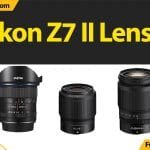
![Best Lenses for Canon EOS M50 Mark II [2021]: Reviews & Buyer’s Guide](https://futureguests.com/wp-content/uploads/2021/01/Canon-EOS-M50-Mark2-Lenses-150x150.jpg)

